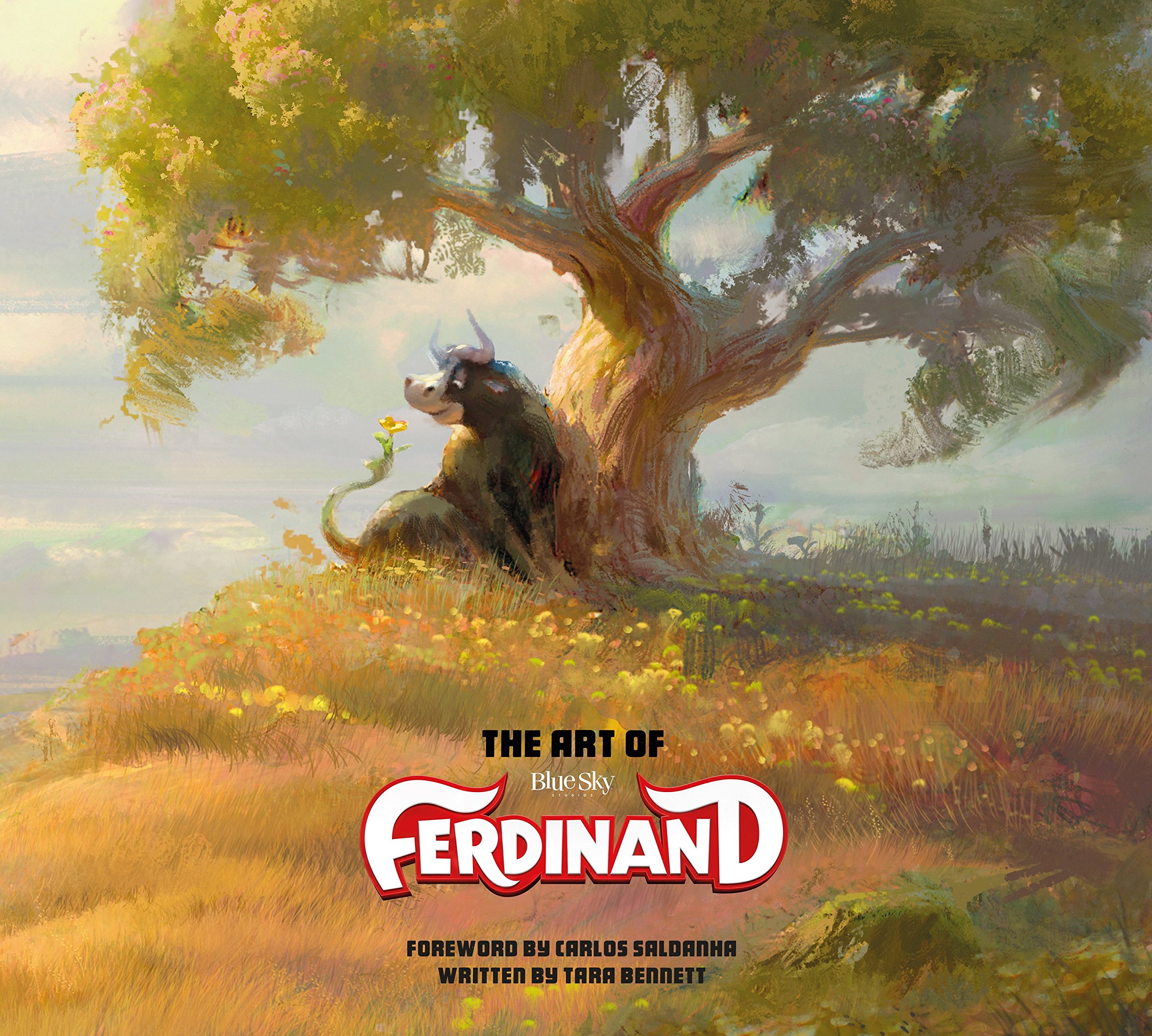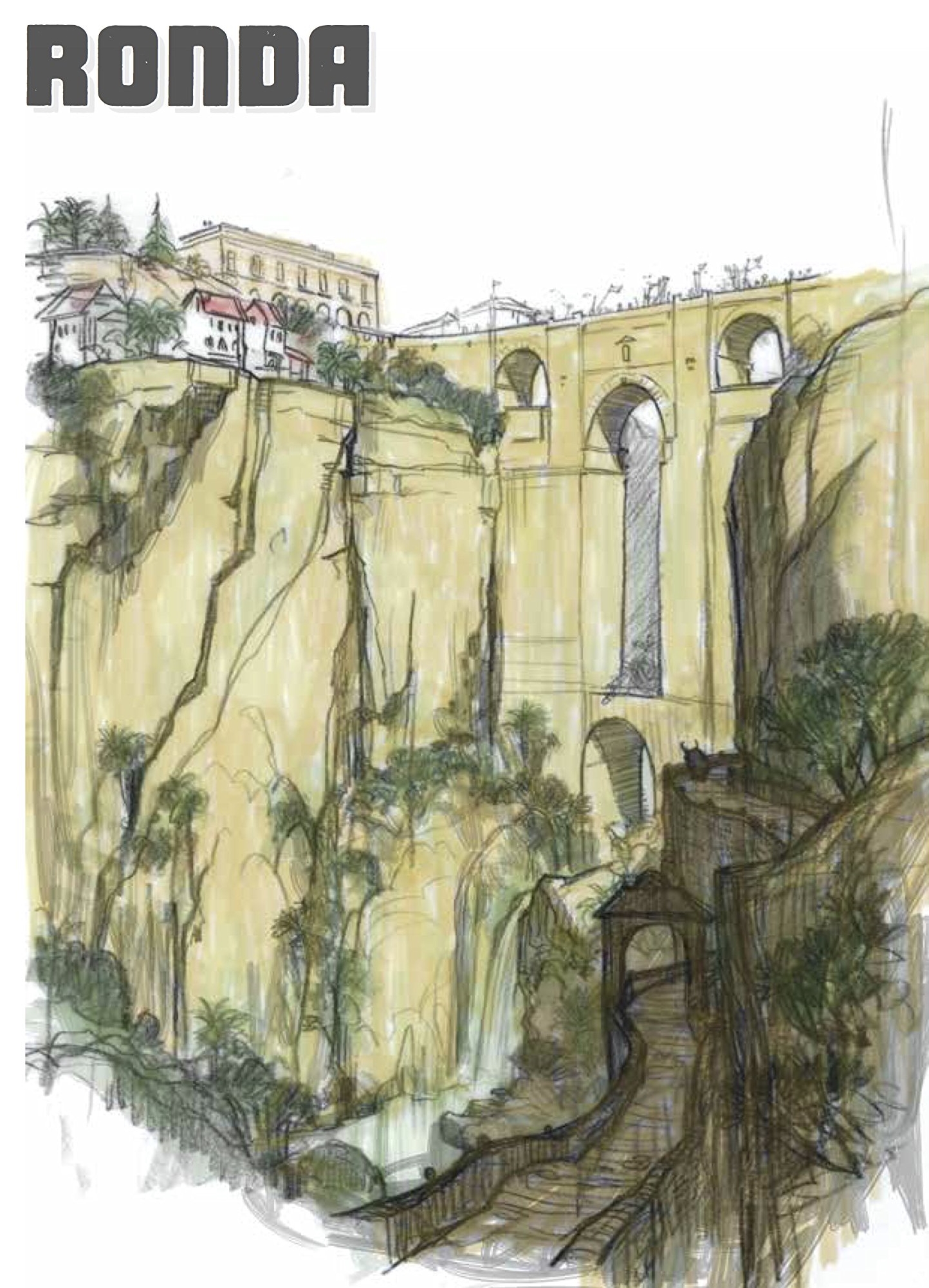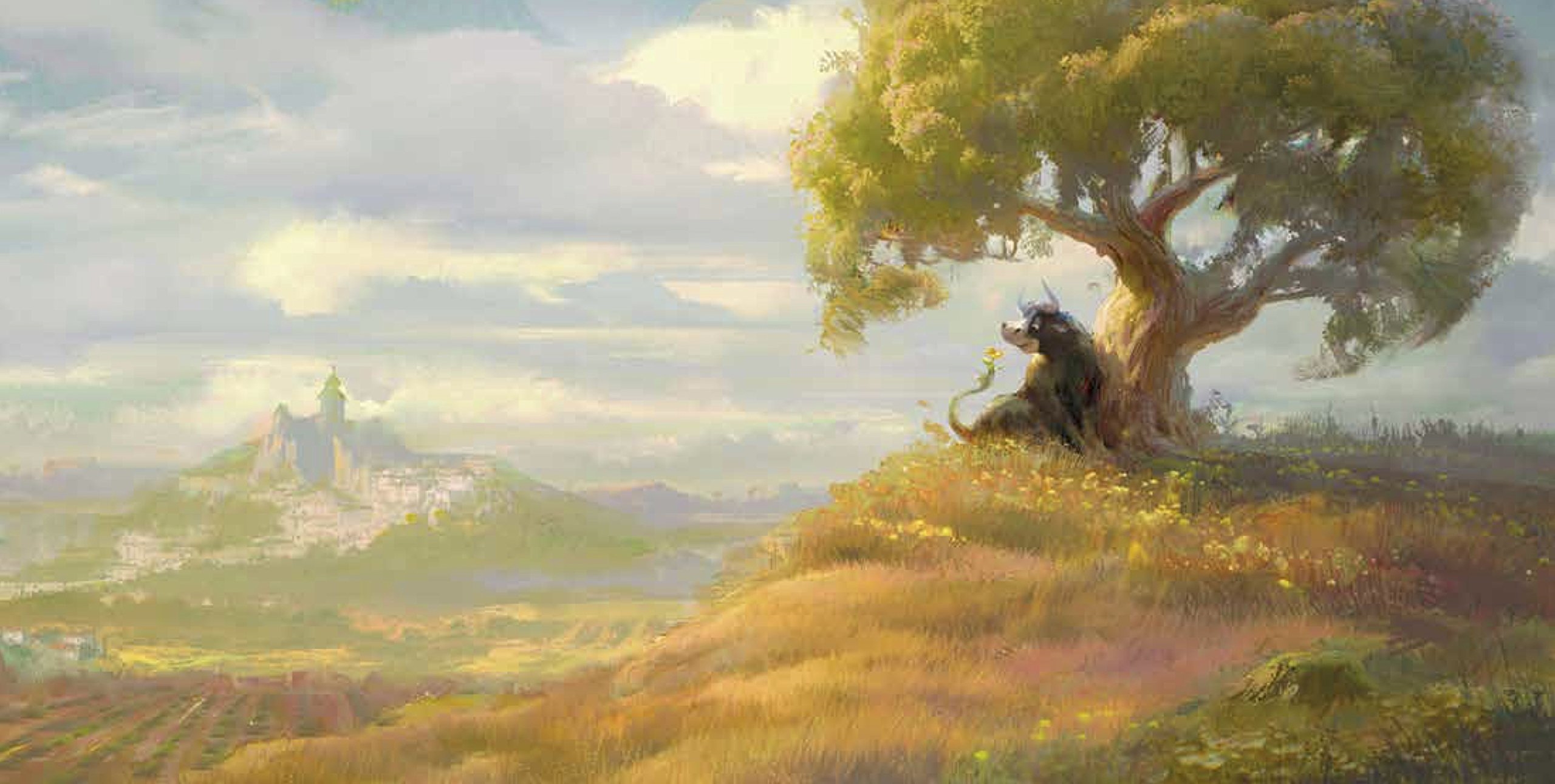The Art of Ferdinand
Posted on January 12, 2018 by John Elrod II in Book Reviews, Featured // 0 Comments
Director Carlos Saldanha brought a clear love and appreciation to two films about his home: Rio and Rio 2. His new film, Ferdinand, is set in Spain and based on the classic children’s book The Story of Ferdinand. In this art book, it is made very clear-while it may not be his home-Saldanha and his Blue Sky Studios crew put just as much care into bringing the Spanish setting to animated life.
I absolutely loved The Story of Ferdinand when I was a kid. Like a lot of children, I felt weird and out of place. Like too many of those children, I was bullied for various reasons. These are elements author Munro Leaf and illustrator Robert Lawson were able to touch on in a way which has viscerally connected with children and adults for over 80 years, with their titular bull and his reluctance to fit in. Even so, I have yet to see Saldanha’s film adaptation because, frankly, I don’t have kids and a grown man seeing a children’s film alone is uncomfortable. Before reading this art book, I already looked forward to eventually seeing it once it hits home media because I trust Carlos Saldanha; after reading this book, I feel as though that trust has been rewarded.
I previously read and reviewed The Art of Rio, which contains artwork from both Rio films. That book, as with this one, was written by Tara Bennett. Bennett is a prolific author of official film and television companion books, such as these, with over 20 credited to her on Amazon. Having now read two such books from her, I can see why she gets so much work.
Bennett’s approach, at least in the two books I’ve read, reads like less of an art book and more like a genuine companion guide to complement your viewing of the film. This book is loaded with interview material with people like Saldanha and production designer Thomas Cardone. It has several quotes from character designers and color key artists discussing things like spatial dynamics, color script, the difficulties of animated furniture design, using 2D animated techniques to bring a unique look to the film, and bringing real locations like Plaza de Toros Las Ventas to their animated world. There’s so much information here simply about making a computer-animated film. Don’t get me wrong; this book is not going to teach you how to do that, but it gives you real contextual information about the making of this film. It’s exactly the kind of information a companion art book for a film should have.
Speaking of what it should have, yes, this book does actually have art in it; so much art, and it’s beautiful. The finished product of an animated film is often so polished and casually realized that it is easy to overlook just how talented the artists working on these films are. That is the main reason books like this one exist. There is so much art created for these films: sketches, drawings, paintings, sculptures, 3D models, turnarounds, etc, and it’s all represented in this book.
The Art of Ferdinand uses all that artwork to show you how Blue Sky Studios populated this film with bulls, matadors, farmers, dogs, goats, birds, bees, cars, Spanish architecture, terracotta roof tiles, bullfighting posters, and so much more. If you like artwork, if you like animated films and how they’re made, if you like Spain, or if you’ve seen Ferdinand and you like it, you’re going to love this book.
Reading this book made me very happy, while also making me even more worried than I already was about Disney’s recent acquisition of 21st Century Fox’s key assets, which includes Blue Sky Studios. I love Pixar films, and I love Disney films, but I’ve also grown to love Blue Sky Studios films and their slight differences from Pixar and Disney. My hope is we’ll continue getting these books and also that Blue Sky Studios will retain the same kind of autonomy Pixar has from Disney because, as The Story of Ferdinand taught us so long ago, being different isn’t so bad.
The Art of Ferdinand Review Score
-
Layout/Design – 9/109/10
-
Writing – 9/109/10
-
Interviews – 10/1010/10
-
Art – 10/1010/10
The Art of Ferdinand
Written by: Tara Bennett | Foreword by: Carlos Saldanha | Editor: Joy Boylett | Designers: Tim Scrivens and Natasha MacKenzie | Publisher: Titan Books | Publication date: December 12, 2017




